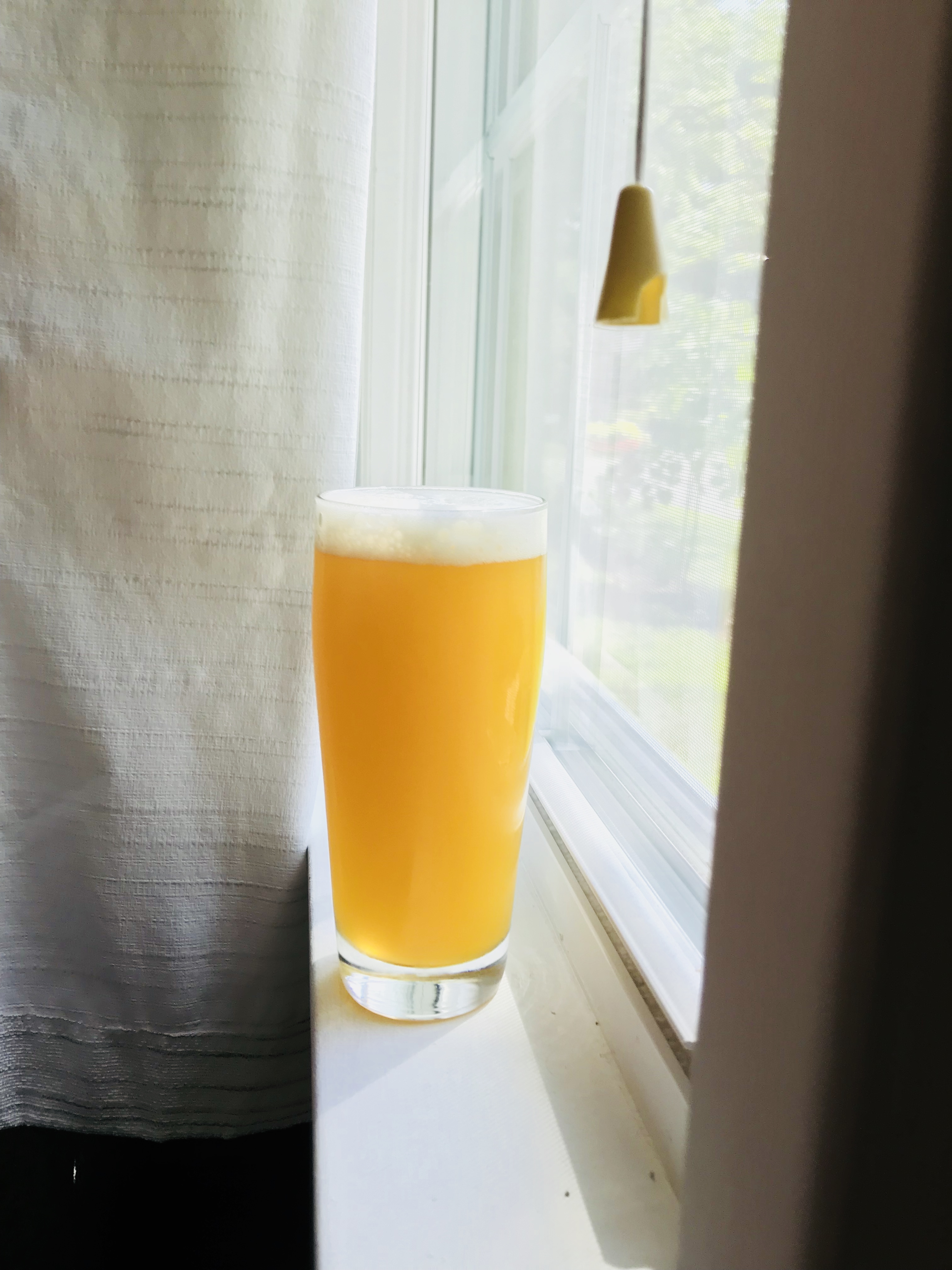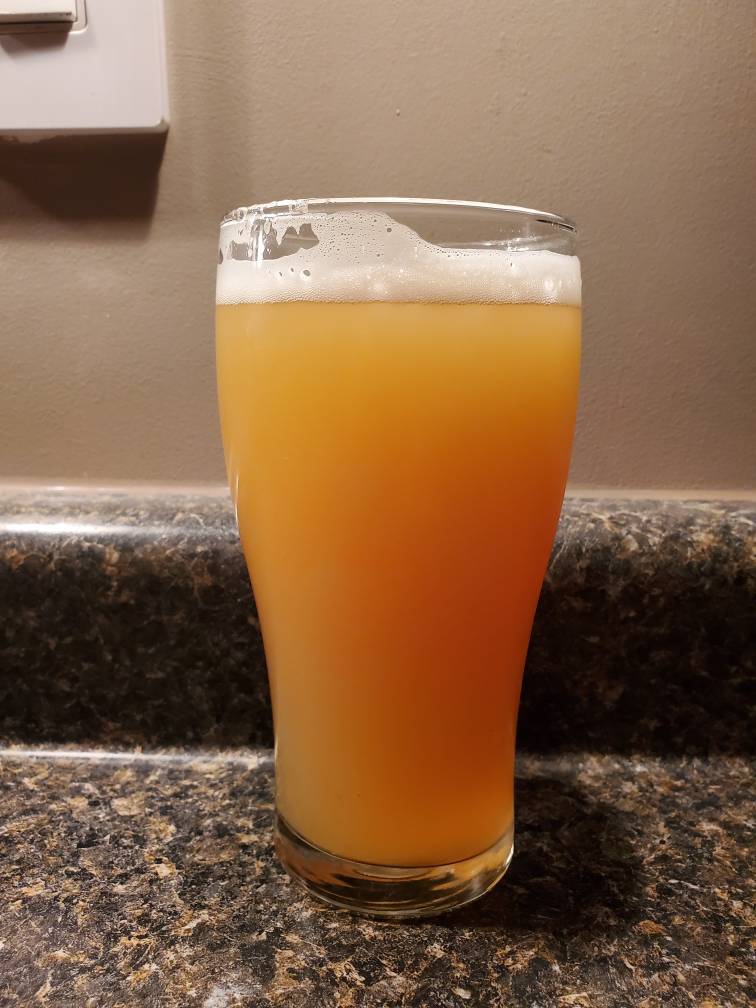Closing the loop on my “kitchen sink” NEIPA (26days from brew day). Not the best but definitely in the top five. Vic secret definitely took lead in aroma & flavor. This is the first time I can say that “guava” is the pronounced flavor in my beer. It is uncanny how much it tastes like guava also it has a very faint hint of pine on the tale end of the sip.
First pour in my new “fancy” beer glass that I bought for get together this weekend. Wife said that I need to be able to serve beer in glasses without a brewery label etched in it. Coincidentally - it is shocking the lack of glass options available that offer a true 16oz pour w/ room for good head. The imperial pint glass just doesnt do it for me neither does the “breaks if you look at it” Speiglau IPA glass. These are Luigi Bormioli Birrateque Stout glasses (identical to IPA glass but 20oz instead of 18oz volume).
Another sidebar - RE Janish book - I dropped malted wheat from my grain bill after reading and now only use mated oats & chit malt. My Brews are at least 0.5-1.0 SRM darker from the outset, oxidize faster (4-5weeks vs 8-10 w/ wheat) even though I employ some rigourous cold side lodo measures, less hazy over the entire life of keg (not that it is a goal just an observation), no noticeable differences in aroma nor body, more malt presence.
I recently purchased some Crisp Naked Oat Malt instead TF am hoping to improve efficiency since this is a hulless oat malt.
Chit malt doesnt live up to the Janish hype for me as I believe other process tweaks and more easily sourced ingredient can accomplish the same things.
I have been using all 2R lately for base - am switching back to all GP. I have noticed a difference in the “sweetness” even though never stopped using honey malt.
View attachment 635870



























































![Craft A Brew - Safale S-04 Dry Yeast - Fermentis - English Ale Dry Yeast - For English and American Ales and Hard Apple Ciders - Ingredients for Home Brewing - Beer Making Supplies - [1 Pack]](https://m.media-amazon.com/images/I/41fVGNh6JfL._SL500_.jpg)







